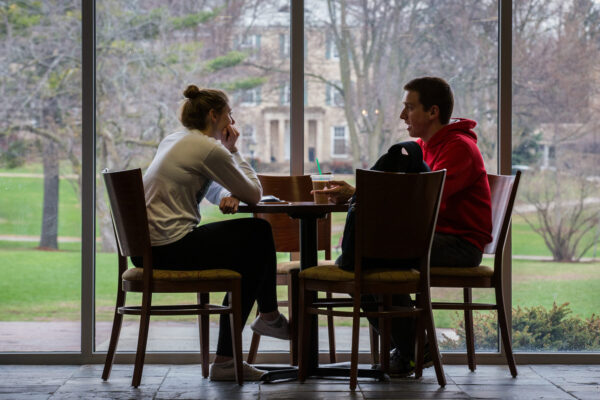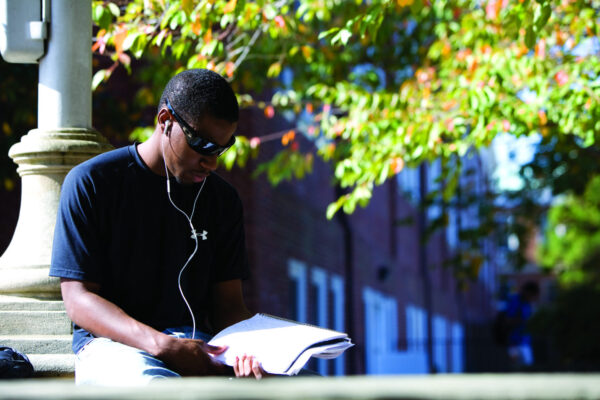By Kate Wolfe-Lyga and Marcus Hotaling
In April 2021, an ACE survey indicated that 73 percent of college presidents identify mental health as a pressing issue as the pandemic-affected 2020–21 academic year comes to a close and they look ahead to the fall semester. A number of studies, articles and blog posts in recent years have hinted that campuses are figuratively hanging off of a mental health cliff. College and university administrators, industry organizations, and mental health leaders have asked questions such as, “what is wrong with our students? Why are our students so depressed? Why are they so anxious?”
These are not the right questions to ask, however. Instead, we should be asking how colleges and universities can ensure that they can meet the mental health needs of their students.
What we know
Through 2019, the Association of University and College Counseling Center Directors (AUCCCD) Annual Survey demonstrated that there was a steady increase in utilization and demand for campus counseling services. Counseling center directors also reported that the severity and complexity of student mental health concerns has increased. Anxiety has been the top mental health concern for the last decade (AUCCCD Annual Survey 2019). The Counseling Center Assessment of Psychological Symptoms measures distress in a number of areas, including depression, anxiety (generalized and social), hostility, eating concerns, substance use, academic, and family distress. While these measurements are reported by the students themselves, they can be seen as a valid depiction of their experiences. Students seek counseling for both developmental and situational problems, as well as clinical treatment of a mental disorder.
Why might the “students are sicker” narrative be misleading?
There are multiple societal factors that confound our understanding of why there has been a steady increase in the number of students who are accessing counseling resources.
To start, for nearly two decades, K–12 education has included some form of universal school-based mental health outreach programs. While we wholeheartedly support these programs, their existence inherently normalizes access to, and more importantly, perhaps develops a student’s reliance on their school systems to provide interventions for social and emotional distress. One outcome of normalizing this access is that it has destigmatized the use of psychotherapy, driving more students to use it. Additionally, through mainstream programming, federal laws such as No Child Left Behind, early diagnosis of mental illness, and advances in therapeutic and psychotropic medicinal treatments, over the past 25-plus years higher education has become a more viable option for this generation of students, whose conditions may have otherwise affected their ability to succeed in high school.
We also need to recognize the social and generational issues facing today’s college students. Traditional-aged students enrolled over the past decade were born into a much different world in terms of perception of safety and potential threats. Where past generations have encountered a world rife with military conflict, recent and current students contend with safety issues that can directly impact them and their anxiety. This generation’s new challenges include not only the current global COVID-19 pandemic, but also security responses to 9/11, school shootings, polarizing political ideology, racial stress, and changing family structures. Students’ assessments of normal life experiences that include failure, loss, and burgeoning independence are often skewed toward a perception of crisis, which correlates with the ever-present standards of perfection in our social media feeds. As college counseling centers increase staff, they increase their capacity to serve students.
What’s a college administrator to do?
It’s important for college leaders to be aware that college counseling centers differ from community mental health clinics. In community mental health, agencies only treat individuals with diagnosed mental health conditions to meet insurance requirements. College counseling centers are unique in that they must not only have the capacity to treat students who’ve been diagnosed with a mental disorder but also be available to meet developmental needs of students. These needs include building social support systems and developing adaptive coping skills to manage life’s difficulties.
First, we have to acknowledge the reality for many campuses: while we advocate for increased and appropriate staffing, we know colleges and universities will not be able to hire their way out of this problem.
However, there is a lot more that we can do, and we want to encourage our leaders to take what is known as an “appreciative inquiry” into the issue. Appreciative inquiry uses a strengths-based (rather than a problem-focused), collaborative approach to address organizational change. The mental health of students cannot be “owned” by college counseling centers alone—mental health is a campus-wide responsibility.
Some key opportunities that are free, but not always easy:
- Model self-care and well-being by encouraging similar opportunities and behaviors in faculty and staff (e.g., taking lunch away from the computer, mindfulness practices)
- Validate students’ emotional experiences (i.e., employees can acknowledge and affirm the reality of how students feel)
- Normalize struggling as part of growth and learning (e.g., publicly recognize that important things are difficult)
- Support the acceptance of failure (e.g., “Bs are beautiful and Fs are feedback” is a cliché that increases self-compassion)
- Do not overpromise what cannot be provided (e.g., long-term counseling, more than once a week counseling, single rooms)
Other low-cost but longer-range solutions include developing programs that foster a sense of belonging among students. Many studies have shown that student retention problems are tied to a thwarted sense of belonging—so are mental health problems.
Investing in training programs for all faculty and staff to become suicide-prevention gatekeepers (community members who have face-to-face contact with large parts of the campus community and are trained to recognize signs of risk to self or others), recognizing mental health concerns, and developing interpersonal skills to engage in difficult conversations with students seeking support are important options. Ensure that your institution has a crisis guide that can help direct and refer students to supportive resources. Add mental crisis hotline/warmline resources information to student ID cards, another intuitive and low-cost option. Lastly, develop services agreements with community-based agencies to supplement services provided by the counseling center.
It is also critically important to invest in staffing the college counseling center in a manner consistent with the level of support you want to provide for students. We understand the difficult task of prioritizing resources among various departments amidst a pandemic. However, it is also necessary to emphasize the risks of not addressing college student’s mental health needs, which include but are not limited to retention, suicidal students, and lawsuits.
We encourage college leaders to speak with the college counseling center director about what is working and where the gaps remain, and to ask about their current Clinical Load Index (CLI) to ascertain what number of “standardized counselors” are needed on campus. The CLI is a tool to help institutions identify the current capacity of the college counseling center, as well as to determine what it might take to staff the level of services you want available to your students (e.g., do you want to provide crisis and referral or psychotherapy?) Also, remember that counseling center support staff should be scaled with clinical staffing expansions.
Finally, survey and talk to students about what they want and need to address gaps in care. Students tend to be aware of what they need for support.
At the heart of the issue, we find that there are numerous factors that have likely contributed to an increase in students’ mental health needs as well as a disruption to our students’ sense of mental well-being. Whether the crisis is “real” is a moot point. The main concern is whether colleges and universities have the capacity to support our students’ mental health and how we ensure it happens.
If you have any questions or comments about this blog post, please contact us.


